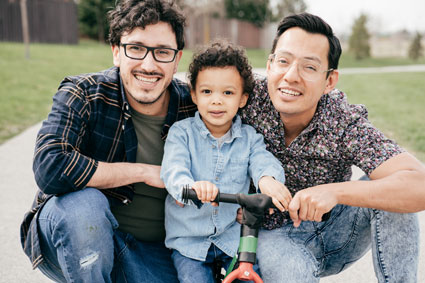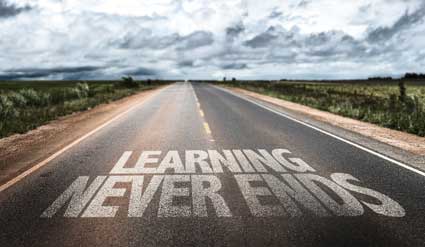Being a parent comes with a steep learning curve in what can feel like almost every area of life for a while. One of the most daunting areas is illness and injury. It can feel overwhelming to bring an infant home from the hospital as a new parent and suddenly feel responsible for recognizing and acting on any potential symptoms. Often, it feels like the older children get, the more susceptible they are to the ever widening environment of germs around them, as well as potential situations for injuries to occur. Yet with some key information coupled with time and experience, parents will be able to manage the process of caring for sick and injured children at home, as well as seeking medical care when needed. In this lesson, we will discuss general information about some common ailments and identify red flags for when to see a doctor or when to utilize home remedies, as well as when to keep school-aged children home from school and activities or send them as normal.
Illnesses and Ailments
flu - The best way to manage risk of catching the flu is to obtain the flu shot every year and early in the season as soon as the vaccine becomes available if possible. This is because the flu is much more intense than a common cold and can result in hospitalization for very young children, as well as put others in the child's life at risk like infants or elderly family members. The flu shot will help the child's immune system fend off the flu virus as much as possible. If your child does get the flu, it is best to seek medical advice before proceeding with home care since each flu season varies in severity and risk of complication. Flu symptoms include a high fever, extreme lethargy, body aches and pains, and loss of appetite. The flu may also be accompanied by respiratory symptoms that mimic a cold. Home care will include regular delivering of medicine, such as acetaminophen and ibuprofen in order to keep the fever down, lots of rest, and careful monitoring of fluid intake. In addition to water, parents may offer their child popsicles to help keep up fluid intake. With the flu, parents will want to monitor the child's voiding of urine to make sure that they are going regularly. If the child does not void urine for more than four to six hours, this is a sign of dehydration and the doctor should be contacted immediately.
gastroenteritis - Also known as "the stomach flu" or "the stomach bug," gastroenteritis is not a flu at all but an entirely separate illness caused by a variety of viruses, including norovirus. Symptoms of gastroenteritis include repeated vomiting and/or diarrhea with no other apparent cause, such as food poisoning. The vomiting and diarrhea may be impossible for the child to control and may happen in bed or before they can make it to the bathroom. Abdominal pain is also a common symptom due to the overexertion of the stomach and digestive muscles. Treatment for gastroenteritis includes monitoring of fluid intake and voiding of urine as described above and seeking medical care for dehydration. Children will also often need food to be reintroduced slowly and selectively when the illness has passed, offering plain foods at first that are not likely to cause upset digestion like applesauce and toast. Though gastroenteritis can often be treated at home, the child should not return to school until their symptoms have completely passed.
Other common childhood illnesses that may require medical attention and/or prescription antibiotics as well as staying home from school and normal activities include RSV, which is dangerous for children under two years old, hand-foot-and-mouth disease, fifth disease, roseola, pinkeye, pinworms, croup, strep throat, and whooping cough. Parents should contact their pediatrician's office or call the nurse hotline if they have non-emergency concerns about any of these diseases. Another common ailment in childhood that is not considered a disease or illness but does still require staying home from school and specific home treatment is a case of lice. Lice can be extremely irritating and stressful for the parent but it is a perfectly normal part of childhood and parents should be prepared to deal with lice at least one time during their child's years at school. As soon as home treatment is completed, children can return to school. However, there are additional steps to delousing the house that may need to take place including bagging stuffed animals for 24 hours and laundering all bed sheets.
Injuries
The most common cause of physical injury to children beyond normal scrapes and bruises due to playing and exercising is car accidents. This is why it is critical for parents to ensure seatbelt usage 100% of the time in their children as well as themselves, to apply safe driving skills at all times, and to always be scanning for the potential dangerous behavior of other drivers on the road. Parents should also provide specific expectations to any other adults that will be driving their child including explicit instructions about not texting while driving and placing phones in an out of reach spot to minimize distractions while driving. Children should also be utilizing proper car seats correctly from infancy through age 12. Babies must remain in a rear facing car seat until age two, and children should remain in a 5-point harness car seat until they are at least 40 pounds. This means that many children will not make the transition to a booster seat until they are age 5 to 7.
Suffocation via blankets is a very real risk for infants under 12 months. This is why infants under 12 months should not have blankets in the bassinet or crib, or other loose items, such as stuffed animals. Infants should be put on their backs to sleep in a sleep sack with a swaddle component for newborns. Suffocation via choking is also a risk for babies and children. Parents should monitor carefully for foods that may present a choking hazard and dice them in very small pieces. Grapes and cherry tomatoes should be cut at least in half or remove them. Parents should also watch out for foods that can create a flap in the child's airway like lettuce or apple skin, as well as foods that can become lodged in the airway and decrease the risk of choking by making sure these foods are not included in the child's diet. Finally, suffocation via drowning is also a risk for children, especially those who don't know how to swim. Children should be supervised closely by an adult during water play activities and when they are near water, such as at the beach or at a park near the coast. Close supervision looks like the adult having "eyes on" the child at all times. If they need to take a break, they need to first transition supervision of the child to another trusted adult. Children should also be wearing lifejackets that are fitted appropriately during any boating activities. During the preschool or early elementary years, children should be enrolled in swimming lessons, and a good option is group lessons through the local recreation center until they are swimming fluently enough to swim from one end of the pool to the other and to tread water for thirty seconds. Even after children have learned to swim, adult supervision should still be a staple of water-based and water-adjacent activities.
Biking can result in injury either via a collision with a motor vehicle or tumbling head over front wheel as a result of hitting an unexpected object like a rock or going too fast down a steep incline. Biking is a wonderful recreational activity that the whole family can enjoy and is also a great source of healthy exercise. However, families should practice safe biking by riding on the sidewalk or designated lanes whenever possible and teaching their child traffic safety skills even 100% of the time--even when riding around at the school playground or close by the family's home--that have been purchased new and sized correctly. Parents should model safe biking behavior by also wearing helmets at all times.
Other common sources of injury include burns from household items like the stove or a curling iron, poisoning from household items like adult medicine both over the counter and prescription, or cleaning supplies, and falls. These can be minimized by providing adult supervision consistently and minimizing usage of hot tools like curling irons and hot drinks without lids around children, as well as locking up medicine and chemicals, and storing them on an out of reach shelf. If something does happen, burns should be treated by a medical professional rather than at home, and potential poisoning should always include a call to Poison Control even if there are no other symptoms. If there are other symptoms, the child should be taken to urgent care or to the doctor. Most falls that result in minor scrapes and bruises can be treated at home with Neosporin and band-aids if necessary. But some falls will result in a broken bone or a sprain and in this case, seek medical help as soon as possible.

























